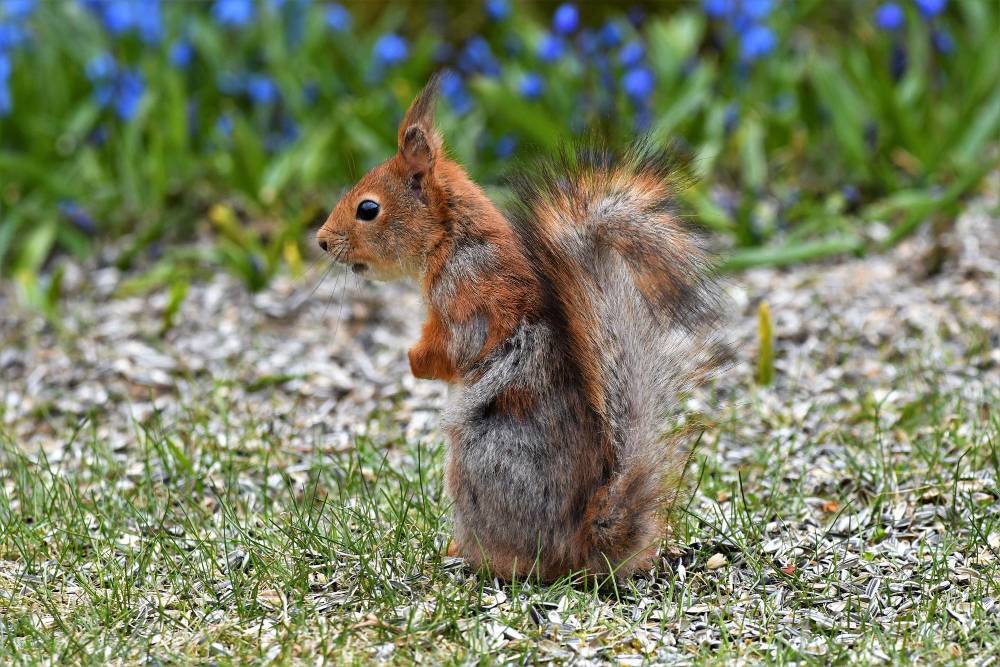Menu

A flier from 1918 encourages schoolchildren in California to kill destructive ground squirrels — using poison. (N/A/State Commission of Horticulture’s Rodent Control Division)
While poking around online a year or two ago, Dave Gilson came across a curious hashtag: #SquirrelWeek.
I’d like to say it was connected to my Squirrel Week — the annual exploration of all things Sciuridae that I launched in 2011 — but who can say for sure? What is for sure is that Dave, a senior editor at Mother Jones magazine in San Francisco, did what he often does: He searched old newspapers for stuff that somehow relates to stories in the news today.
And, Dave said, when he typed “squirrel week” into an archive of old California newspapers, “it turned up all these stories about Squirrel Week and the campaign to kill the squirrels. That sent me down a rabbit hole — or perhaps a squirrel hole.”
Whatever kind of hole it was, it was deep and it was dark. How dark? In 1918, the state of California encouraged schoolchildren to exterminate as many ground squirrels as they could, by any means, during the week of April 29 to May 4.
It gives “Squirrel Week” a whole different cast.
Said Dave: “My first reaction was, this is so weird. Especially these days, most people think of squirrels as cute and fuzzy and not really that annoying.”
Dave wrote about his findings in a wonderful story published in November on the Atlas Obscura website. The headline: “In 1918, California Drafted Children Into a War On Squirrels.”
The campaign was framed in terms of the damage squirrels did to the state’s crops. One poster Dave found was headlined “Death to the Squirrel” and featured skull and crossbones (human, not squirrel). “Millions in food must be saved,” the text read. “Slay the mother squirrel during breeding season — March to May. A squirrel in time saves killing nine.”
Another illustration showed a bonnet-wearing woman holding a bucket labeled “Poison barley.” Says the woman: “Children, we must kill the squirrels to save food. But use poisons carefully.”
Said Dave: “There was one pamphlet that literally told you how to hook up the exhaust pipe of your car to a squirrel burrow and basically asphyxiate an entire colony. Pretty sadistic territory.”
Wrote Dave in his Atlas Obscura piece: “Just in case civic duty wasn’t motivation enough, there were also rewards: $50 ($800 today) to each of the elementary and high schools whose pupils killed the most squirrels, and $30 and $20 to the runners-up.”
The United States was at war in 1918, and Squirrel Week took on a jingoistic tone. Some anthropomorphic squirrels were depicted wearing German-style spiked helmets.
“They were eventually portrayed not just as pests, but as allies of the Germans and allies of the Kaiser,” Dave said.
By the end of the “schoolchildren’s squirrel-killing contest,” 104,509 ground squirrels’ tails had been turned in.
While the kid angle might have been unprecedented, such murderous incentives were not new. An 1897 article in The Washington Post noted that 30 U.S. states were offering bounties for certain troublesome animals, including wolves, panthers, ground squirrels, pocket gophers, woodchucks and English sparrows.
But the ecosystem is complicated, and it’s not always easy to figure out who the real enemy is. According to The Post, over the course of 18 months, Pennsylvania had shelled out $90,000 in bounties for chicken-killing hawks and owls. But it was noted that each hawk and owl would have killed 1,000 mice, an animal injurious to crops.
Wrote the Post: “It appears that Pennsylvania expended $90,000 in destroying birds worth $3,857,230 for the sake of saving $1,875 to the poultry interest.”
Two species of ground squirrels — Otospermophilus beecheyi and Otospermophilus douglasii — are still officially a problem in California. Their burrows are said to weaken levees and divert irrigation water. The critters themselves eat alfalfa, almonds, apples, apricots, oranges, peaches, pistachios, prunes, tomatoes and walnuts — among other crops.
These days, though, the squirrels’ elimination is left to professionals, not children with buckets of poisoned barley.
Guys came on time did their job in a very professional way and we are very happy with their service.
Company is on top of their game David showed up to get are gophers. came out three days in a row haven’t seen a go for since
Joseph is a great ambassador for Wheeler's pest control, and a shout out to Daniel for dealing with my crazy schedule. Thanks guys!
A local business that everyone should support. All techs are knowledgeable, professional! FYI, they are also great w/ eradicating gophers as well!!